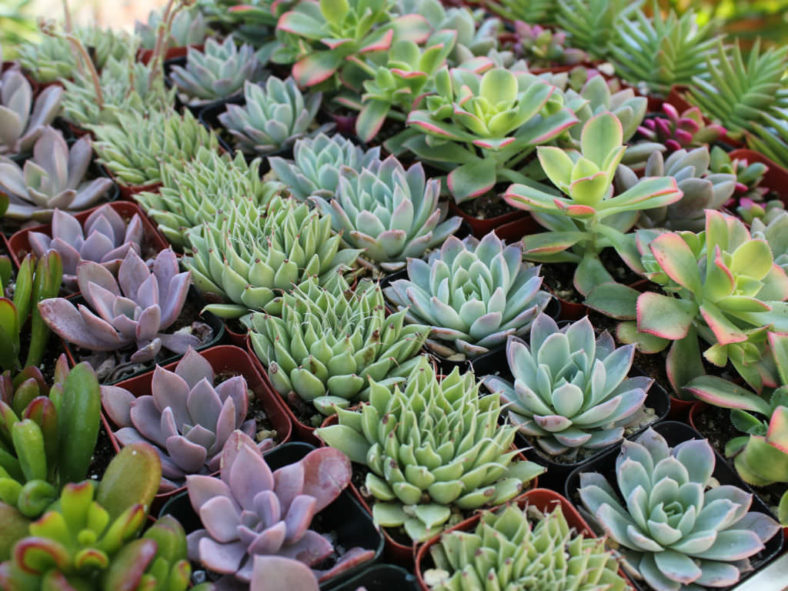Succulents are booming in popularity for two simple reasons: they are beautiful and nearly indestructible.
Technically, a succulent is any plant with thick, fleshy water storage organs. Succulents store water in their leaves, stems, or roots. They have adapted to survive arid conditions worldwide, from Africa to North America's deserts. Fortunately, this adaptive mechanism has resulted in various interesting leaf forms and plant shapes, including paddle leaves, tight rosettes, and bushy or trailing columns of teardrop leaves.
Succulents include some of the most well-known plants, such as Aloe and Agave, and many almost unknown plants. Cacti are a unique subset of the succulent group.
No matter what kind of succulent you are growing, the rules are pretty similar between the different species.
Light
Succulents prefer bright light. Watch the leaves for indications that the light level is correct. Some species will scorch if suddenly exposed to direct sunlight. The leaves turn brown or white as the plant bleaches out, and the soft tissues are destroyed. Alternatively, an underlit succulent will begin to stretch with an elongated stem and widely spaced leaves. This condition is known as etiolation. The solution is to provide better light and prune the plant back to its original shape. Many kinds of succulents will thrive outdoors in the summer.

Temperature
Succulents are much more cold-tolerant than many people assume. In the desert, where there is often a marked contrast between night and day, succulents thrive on colder nights, down to even 40 ºF (4 ºC). Ideally, succulents prefer daytime temperatures between 70 and 85 ºF (21 and 30 ºC) and nighttime temperatures between 50 and 55 ºF (10 and 13 ºC).
Water
Most succulents should be watered generously in the summer. The potting mix should be allowed to dry between waterings but not underwater. When most succulents go dormant during the winter, cut watering back to once every other month. Overwatering and ensuing plant rot is the most common cause of plant failure. However, be aware that an overwatered succulent might plump up and look very healthy at first. This is because the cause of death may have already been set underground, with rot spreading upward from the root system. Therefore, a succulent should never be allowed to sit in water. The following are signs of underwatering or overwatering:
- Overwatering. Overwatered plants are soft and discolored. The leaves may be yellow or white and lose their color. A plant in this condition may be beyond repair, but you can still remove it from its pot and inspect the roots. If they are brown and rotted, cut away dead roots and repot into drier potting media, or take a cutting and propagate the parent plant.
- Underwatering: Succulents prefer generous water during the growing season. An underwatered plant will first stop growing and then begin to shed leaves. Alternatively, the plant may develop brown spots on the leaves.
Potting Soils
Succulents should be potted in a fast-draining mixture designed for cacti and succulents. If you do not have access to a specialized mix, consider modifying a standard potting mix with an inorganic agent like perlite to increase aeration and drainage. These plants generally have shallow roots that form a dense mat just under the soil surface.
Fertilizer
During the summer growing season, fertilize as you would with other houseplants. Stop fertilizing entirely during the winter.
Source: about.com
Links
- Succupedia: Browse succulents by Scientific Name, Common Name, Genus, Family, USDA Hardiness Zone, Origin, or cacti by Genus